Faculty of Economics University of Zagreb Celebrates 100 Years
ZAGREB December 5, 2020 – With over 9000 students currently enrolled, the Faculty of Economics University of Zagreb is the largest faculty in Croatia. In 2020, this internationally renowned institution celebrates its 100th birthday, so TCN decided to take a closer look.
Every other student you meet in Croatia seems to study economy. It makes you wonder where they all go to after their studies are complete. Are there really so many positions for economists in Croatia?
In 2020, the Faculty of Economics University of Zagreb celebrates its 100th birthday. The long list of its famous former students gives a clue to where all the Croatian economists go – the tourism sector, diplomacy and international relations, business, politics and government.
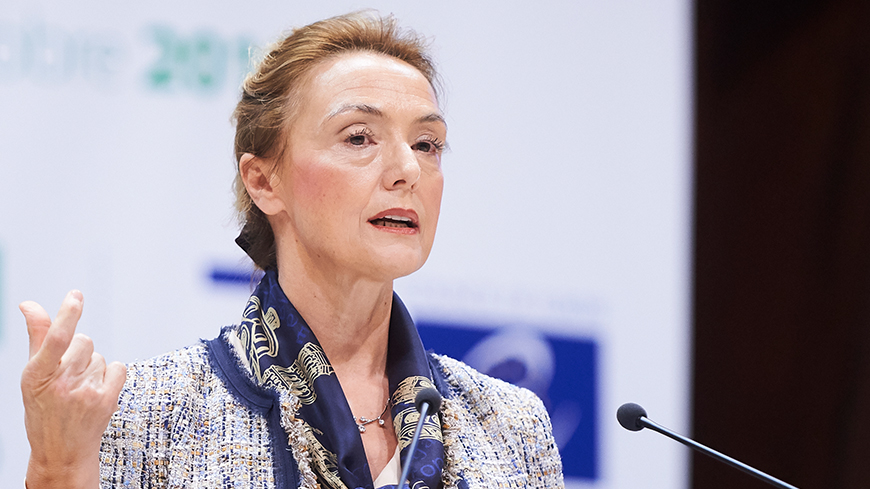 Marija Pejčinović Burić, a graduate of the Faculty of Economics of the University of Zagreb and the current Secretary General of the Council of Europe. After graduating, like Savka Dabčević-Kučar, she became o doctor of economics and before taking her current position served as Croatia's Deputy Prime Minister and Minister of Foreign and European Affairs © Council of Europe
Marija Pejčinović Burić, a graduate of the Faculty of Economics of the University of Zagreb and the current Secretary General of the Council of Europe. After graduating, like Savka Dabčević-Kučar, she became o doctor of economics and before taking her current position served as Croatia's Deputy Prime Minister and Minister of Foreign and European Affairs © Council of Europe
Graduates of the Faculty of Economics University of Zagreb have served as mayors of Zagreb and Split, Deputy Prime Minister of Croatia, Minister of Finance, Minister of the Economy, Secretary-General of the Council of Europe, Governers of the Croatian National Bank, Vice-President of the UN World Food Council, President of the Croatian Football Association, Minister of Environmental and Nature Protection, special advisors to the President of Croatia and countless university professors, including several former rectors of the University of Zagreb. Within its graduate professors, it has produced no less than 19 full members of the prestigious Croatian Academy of Sciences and Arts, more than any other single institution in the country.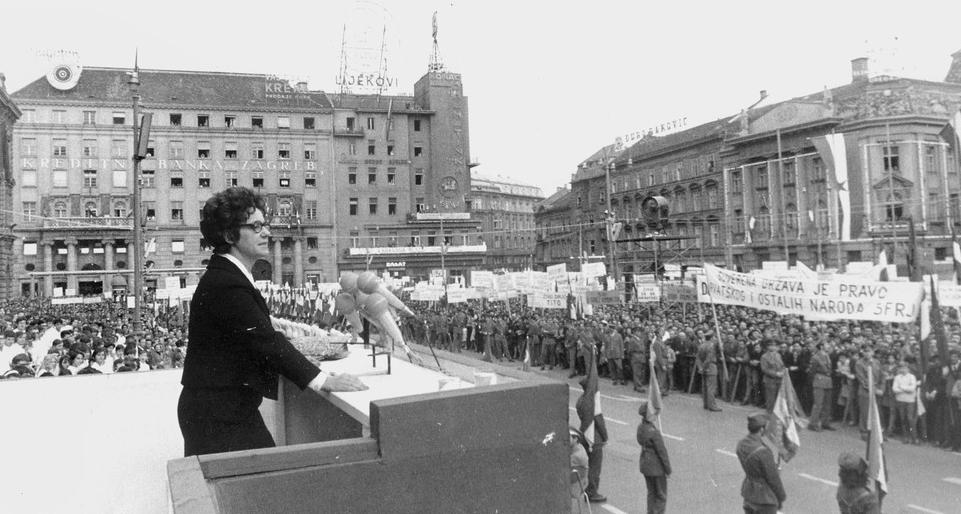 Savka Dabčević-Kučar, a graduate of the Faculty of Economics of the University of Zagreb. Born on Korčula, she became an anti-fascist in World War II, joining the partisans after her brother was beaten by fascists. After graduating, she continued to study at the faculty and became one of the first doctors of economics in Croatia, raising eyebrows by choosing to write her doctorate dissertation about a non-Marxist economic theorist (Englishman John Maynard Keynes). She became a professor at the faculty in the 1950s and despite her great advances in political life, remained a committed teacher at the faculty until 1971. In 1967, she was elected President of the Socialist Republic of Croatia. In 1969, she moved to an even more important position - that of president of the Central Committee of the League of Communists of Croatia. She was the first woman in Europe to be appointed head of government of a political entity and the first female in Croatia to hold an office equivalent to a head of government. In this picture, she addressed supporters on Ban Jelacic Square Zagreb during the movement called the Croatian Spring, which called for greater autonomy for Croatia. At the address, thousands cheered her as “Savka, queen of the Croats”. For her pivotal role in the movement, she was removed from her positions and public life and retired. She returned to politics in 1990 upon the collapse of communism in Europe and during the Croatian war of independence was one of the few politicians who visited the front lines of battle in Slavonia, Petrinja, Pokupski and the Dalmatian hinterland
Savka Dabčević-Kučar, a graduate of the Faculty of Economics of the University of Zagreb. Born on Korčula, she became an anti-fascist in World War II, joining the partisans after her brother was beaten by fascists. After graduating, she continued to study at the faculty and became one of the first doctors of economics in Croatia, raising eyebrows by choosing to write her doctorate dissertation about a non-Marxist economic theorist (Englishman John Maynard Keynes). She became a professor at the faculty in the 1950s and despite her great advances in political life, remained a committed teacher at the faculty until 1971. In 1967, she was elected President of the Socialist Republic of Croatia. In 1969, she moved to an even more important position - that of president of the Central Committee of the League of Communists of Croatia. She was the first woman in Europe to be appointed head of government of a political entity and the first female in Croatia to hold an office equivalent to a head of government. In this picture, she addressed supporters on Ban Jelacic Square Zagreb during the movement called the Croatian Spring, which called for greater autonomy for Croatia. At the address, thousands cheered her as “Savka, queen of the Croats”. For her pivotal role in the movement, she was removed from her positions and public life and retired. She returned to politics in 1990 upon the collapse of communism in Europe and during the Croatian war of independence was one of the few politicians who visited the front lines of battle in Slavonia, Petrinja, Pokupski and the Dalmatian hinterland
The Faculty of Economics University of Zagreb is the largest faculty in the country. Over its 100 year history, it has established itself as an internationally respected institution. Today, it has around 9000 persons enrolled, caters for international students with some courses in English and has produced over 86, 000 graduates, including 856 doctors of science.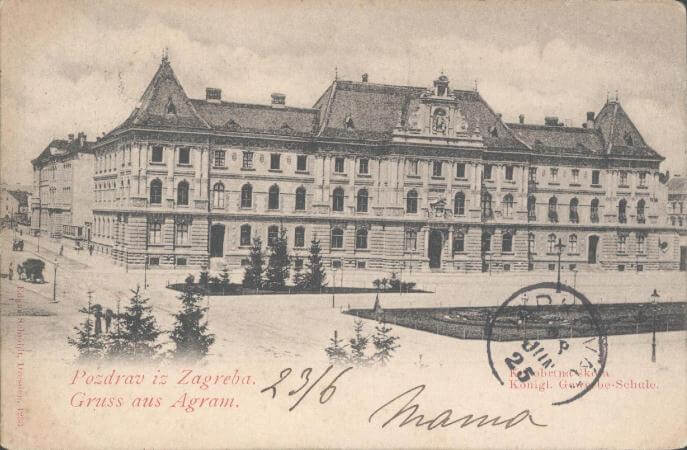 In its infancy, students of the College of Trade and Transport were taught at the Technical College, which is today the Museum of Arts and Crafts in Zagreb © National and University Library in Zagreb
In its infancy, students of the College of Trade and Transport were taught at the Technical College, which is today the Museum of Arts and Crafts in Zagreb © National and University Library in Zagreb
The history of the Faculty of Economics University of Zagreb starts with the opening in 1920 of its forerunner, the Zagreb College of Trade and Transport. Its purpose was to educate in the areas of banking, domestic and international trade, transport, consular services, insurance and the education of teachers. Its courses lasted three years and it proved so popular that in the academic year 1923/24, some 1,125 students were enrolled.
The institution held college status until 1925 when Stjepan Radić became the Minister of Education. It must have been unusual for Radić to find himself as part of the government of the Kingdom of Serbs, Croats and Slovenes, the state which preceded the Kingdom of Yugoslavia. Today, Radić is best remembered as a politician outspoken in his advocacy of autonomy for Croatia. Before his appointment to the government, he had always done so in opposition. Indeed, he had been imprisoned several times for his views, which were proclaimed loudly in his writings or in person (he was a gifted public speaker). As recently as March 1925 he had been in prison but, when the political party of which he was a member officially recognised the monarchy and the state constitution, he was freed. In a remarkable turnaround, before the year's end, he was a minister in the government.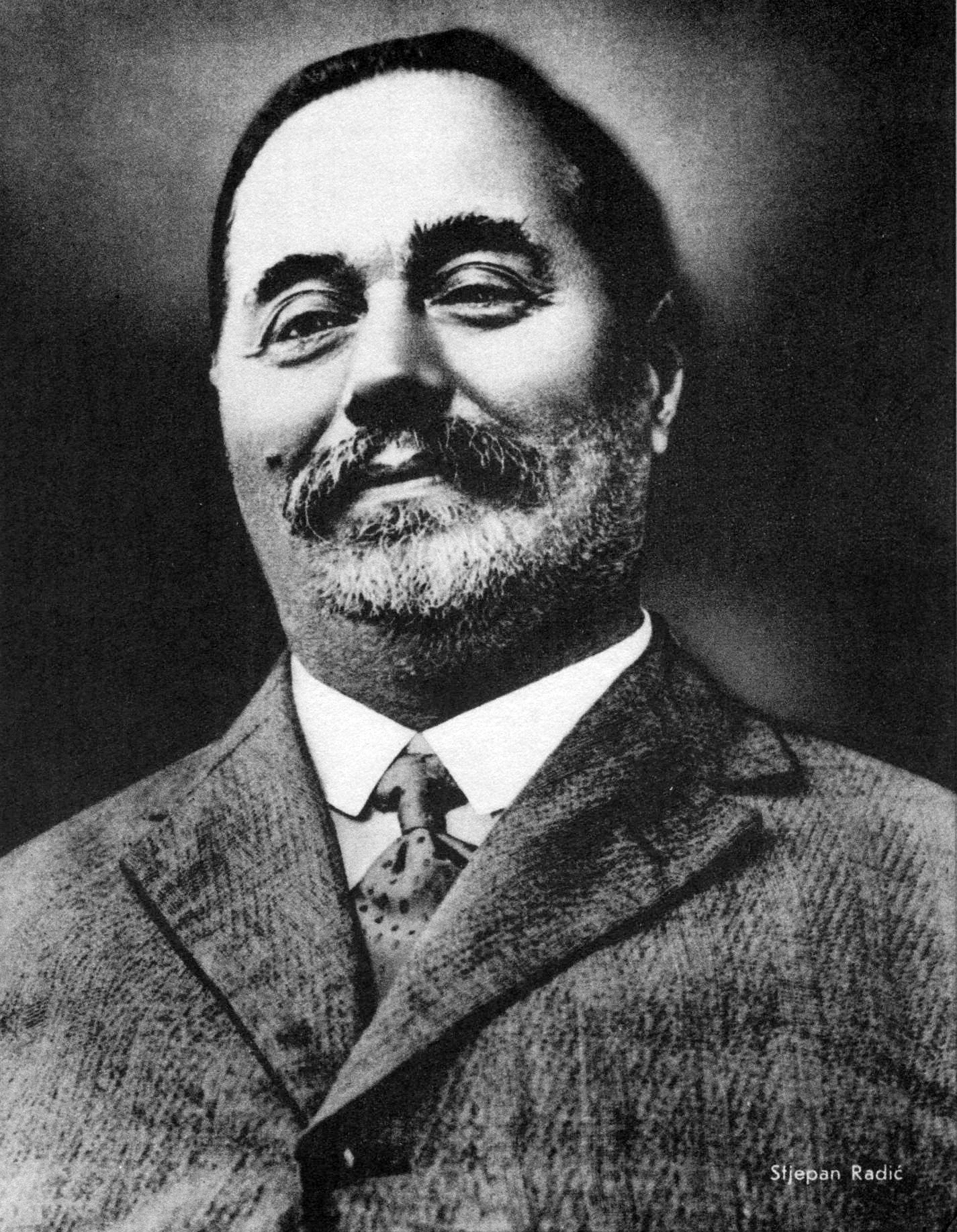 Stjepan Radić, pictured in the 1920s © public domain. In 1895 Radić was sent to prison for the public burning of the Hungarian flag in Zagreb – alongside Antun Dabčević, the father of Savka Dabčević-Kučar.
Stjepan Radić, pictured in the 1920s © public domain. In 1895 Radić was sent to prison for the public burning of the Hungarian flag in Zagreb – alongside Antun Dabčević, the father of Savka Dabčević-Kučar.
Stjepan Radić's desire for Croatian autonomy was not born from the ideals of the political class of Zagreb. The ninth of eleven children, born to a peasant family in a small village on the banks of the Sava river, just north of Sisak, Radić was very much a representative of the people whence he came. To him (and others in his family – his brother and nephew also being prominent politicians), education had the most important role to play in emancipation. He had lived in poverty in order to complete his own - after being banned from university-level educational institutions throughout the whole of the Austro-Hungarian empire for his protests against the state, he travelled penniless to Russia, France and Switzerland to complete his studies. In the latter, finance was one of his chosen subjects.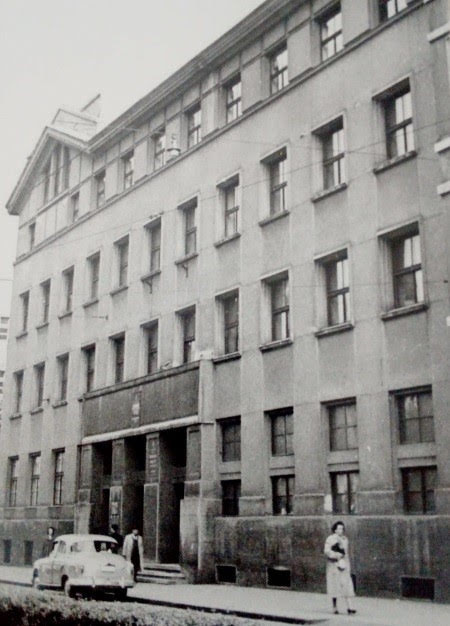 The first dedicated building of the Higher School of Economics and Commerce was located on the corner of Bauerova and Zvonirmirova © Faculty of Economics University of Zagreb
The first dedicated building of the Higher School of Economics and Commerce was located on the corner of Bauerova and Zvonirmirova © Faculty of Economics University of Zagreb
Under Radić's spell in office, the Zagreb College of Trade and Transport became the Higher School of Economics and Commerce. Its courses extended to four years, it attained university status. With no building designated to the increasingly popular institution, students had sometimes been taught at the Technical College (today's Museum of Arts and Crafts) and in parts of what is now the Mimara Museum. A dedicated home for the faculty was authorised and its construction started in 1927. Classes began at the faculty, located on the corner of Bauerova and Zvonimirova, in 1928, but within the decade the institution had outgrown its home and a plot of land in Svetice was acquired in order to build a new, larger facility. Its construction was interrupted by the Second World War and students would end up being taught on the Bauerova and Zvonimirova site all the way up to 1952.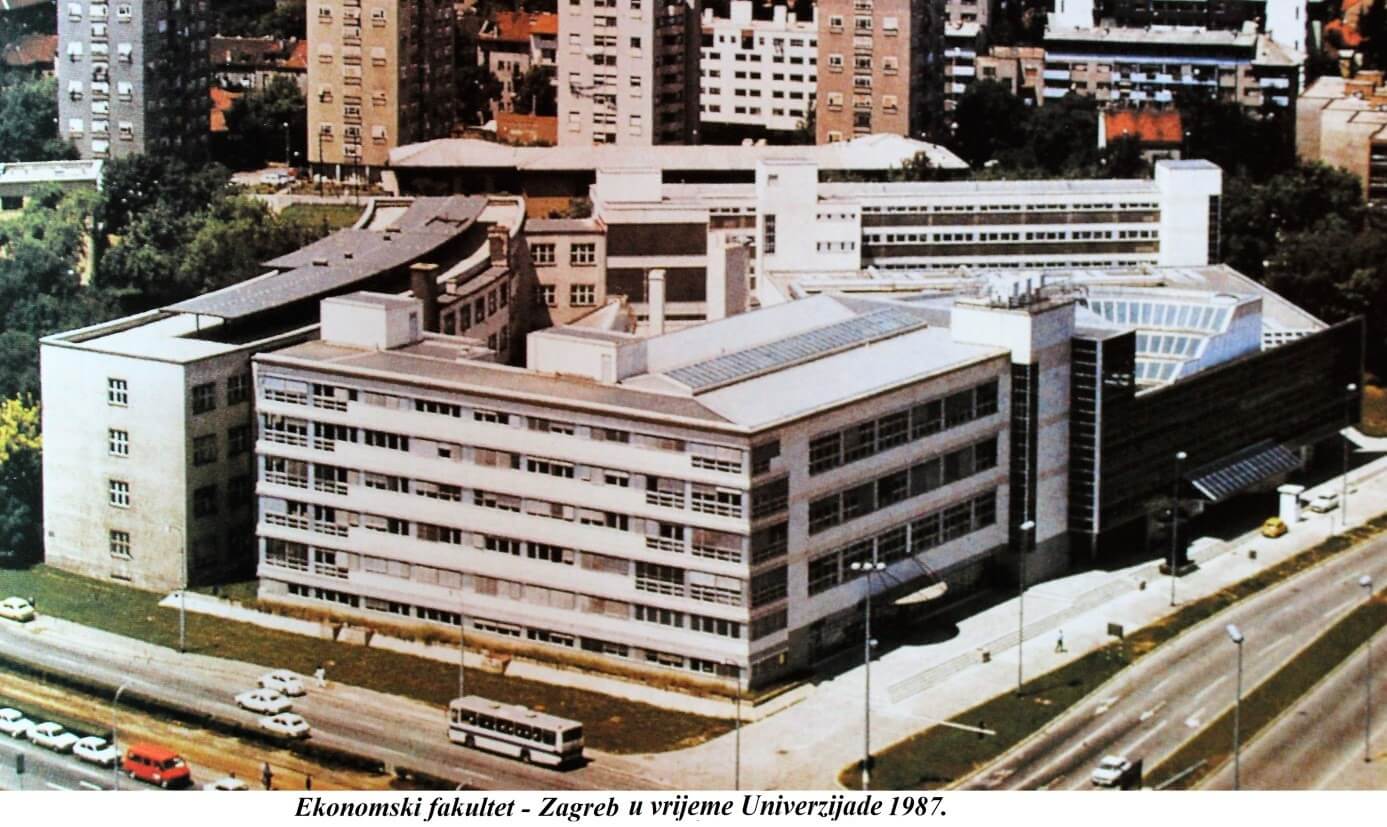 The faculty's modern building, pictured in 1987. Today, the faculty has 17 departments - Finance, Demography, Economic Theory, Business Economics, Informatics, Macroeconomics and Economic Development, Marketing, Mathematics, International Economics, Business in Foreign Languages, Organization and Management, Law, Accounting, Statistics, Trade and International Business, Tourism, Physical Education and Health © Faculty of Economics University of Zagreb
The faculty's modern building, pictured in 1987. Today, the faculty has 17 departments - Finance, Demography, Economic Theory, Business Economics, Informatics, Macroeconomics and Economic Development, Marketing, Mathematics, International Economics, Business in Foreign Languages, Organization and Management, Law, Accounting, Statistics, Trade and International Business, Tourism, Physical Education and Health © Faculty of Economics University of Zagreb
In 1947, the Higher School of Economics and Commerce became the Faculty of Economics University of Zagreb. In 1952, the faculty officially moved to the new site in Svetice. In 1968 it expanded once more when it merged with the 12-year-old College of Economics. Since then, the building at Svetice has received major upgrades and further facilities of the faculty can now also be found at the university campus in Borongaj, in Varaždin, in Koprivnica and in Bjelovar. After a century of existence, the Faculty of Economics University of Zagreb's longstanding difficulties to meet the popularity of its courses with the space available are now over. Not only can they accommodate every Croatian economy student who makes the grade, but they are also able to offer places to some of the best international students. It would surely come as no surprise if they are still educating the future elites of business, banking, finance and politics in another 100 years.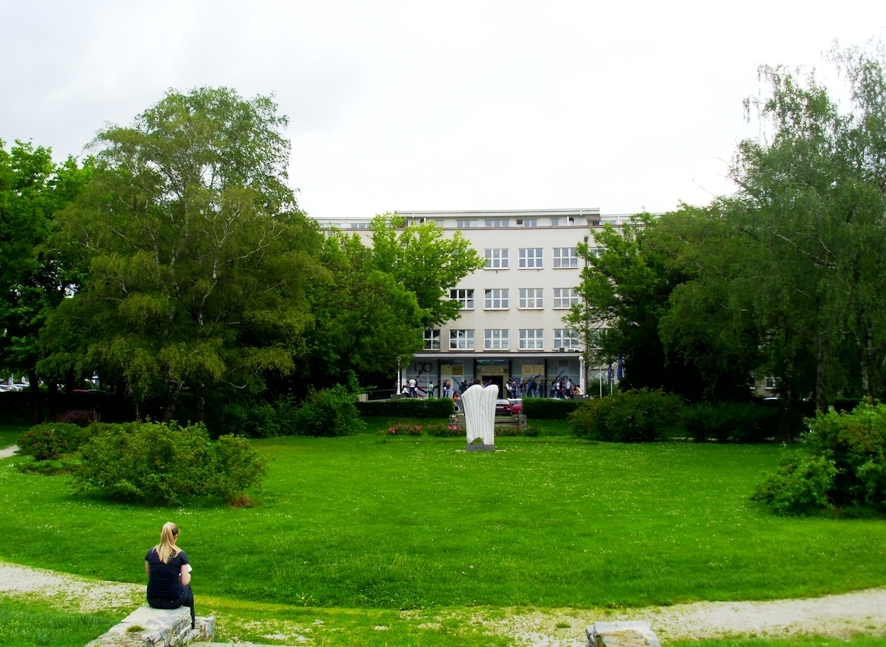
The Faculty of Economics University of Zagreb site in Svetice, as seen from its garden © Wolf - Pidgeon
Slavonia Students Spot 300 Spelling Mistakes In Names of Public Places
November 21, 2020 - How difficult is it to learn Croatian? Slavonia students from one high school learned it's really not so easy for people to correctly use their own language
How difficult is it to learn Croatian? Well, it's pretty difficult. Croatians know this best of all and will be reasonably impressed if you make any advances in trying to speak their language. A professor of linguistics from Zagreb University once told this writer that to be able to regard yourself as wholly proficient in the Croatian language, you would have to study it to no less than university level. Naturally, not every speaker of Croatian has done so.
Slavonia students from a high school in Slavonski Brod were recently tasked with looking for mistakes in the use of Croatian language in public places. So complex is the Croatian language, spelling and grammar mistakes are commonplace. The teacher assigning the task, Vesna Nosić from Matija Mesić high school, was no doubt confident her students would uncover some mistakes. However, the grand total of 300 spelling and grammar mistakes the Slavonia students found is possibly more than was bargained for. Particularly as those found were all assigned to public places.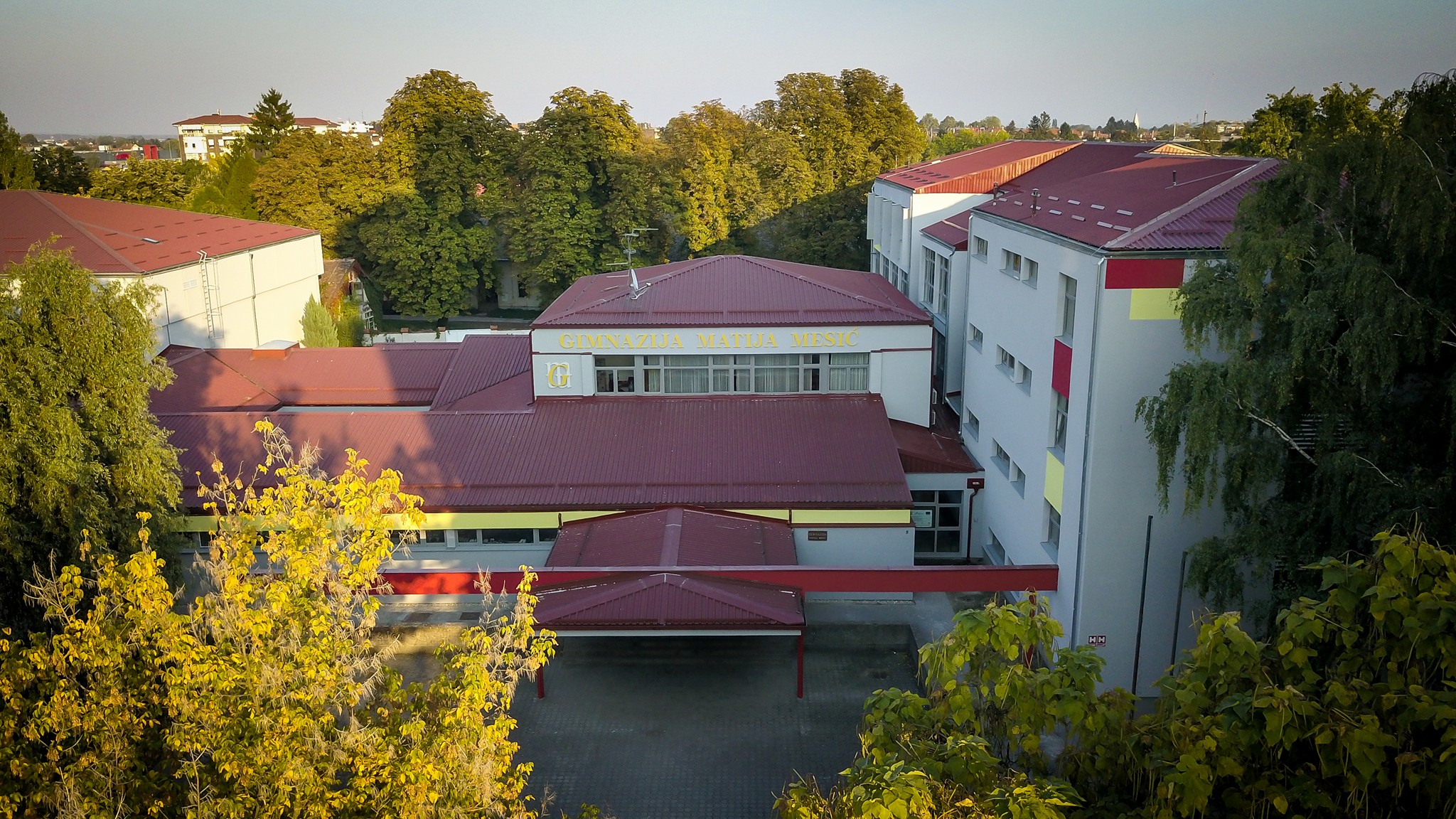 Matija Mesić high school in Slavonski Brod, where Slavonia students made their findings © Matija Mesić high school
Matija Mesić high school in Slavonski Brod, where Slavonia students made their findings © Matija Mesić high school
The misspelling or incorrect translation of food items on a restaurant or tavern menu is a regular cause of amusement in Croatia. But, the mistitling of public places - streets, squares, companies, monuments, traffic signs and even schools – is perhaps more surprising. These are places you walk past every day.
The Slavonia students were given the high bar of the official standards of Croatian language set by the Institute of Croatian Language and Linguistics. Their teacher, Vesna Nosić, has published their findings in the popular science journal Hrvatski jezik (Croatian language), which is published by the institute. Croatian language is something of a national obsession in Croatia, its acceptance as the official language very closely linked to the country's struggle for autonomy. For most of its history, the lands of modern-day Croatia were controlled by empires for whom Croatian was not their language. The use of foreign tongues has been imposed on the population of Croatia for centuries.
The most common mistakes made in the Croatian language are related to the incorrect use of the sounds ć and č, đ and dž. The letters here come from Gaj's Latin alphabet, devised by Croatian linguist Ljudevit Gaj in 1835. It is the Latin script used across the region in which to write the similar languages of Bosnian, Croatian, Serbian, and Montenegrin (in Bosnia, Serbia and Montenegro, the Cyrillic alphabet is used as well as Gaj's Latin alphabet).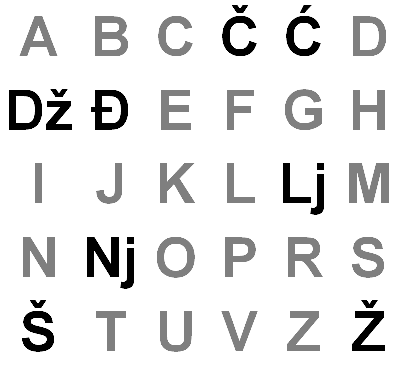
The contemporary version of Gaj's Latin alphabet (it originally contained Dj, which was replaced by đ. This alphabet ihe easiest part of learning Croatian - within 15 minutes, almost anyone can correctly pronounce all Croatian words by using this. In comparison to the Latin alphabet used by English speakers, the letters q,w,x,y are omitted. Instead, we get the additional č, ć, dž, đ, lj, nj, š and ž. Looks difficult? It isn't. Almost all of these sounds exist within the English language. Except for lj which, to English speakers, is torturously missing some kind of vowel © Albatalad
Mistakes between the ć and č or đ and dž sounds are understandable if you can pronounce Gaj's Latin alphabet. And anyone can. The easiest part of learning Croatian is Gaj's Latin alphabet – all of the sounds exist within the English language, all of the letters are always pronounced in exactly the same way (unlike English). The difference in sound between ć and č or đ and dž in spoken Croatian is difficult to perceive if you are not a native speaker (often, even if you are!)
Some of the mistakes found by the Slavonia students are perhaps more forgivable – the standard of Croatian their comparisons was made against is rigid. Thus, pekarna (bakery) instead of pekarnica, or dućan (shop) instead of trgovina were classed as mistakes, but are actually in everyday use on streets across Croatia.
Other mistakes found relate to grammar, spelling and the misuse of upper case or lower case lettering. For instance, Ulica Pavleka Miškina should be written Ulica Pavleka Miškine (the word ending changes to denote it is the street of Pavlek Miškina), Crkva Gospe od brze pomoći, should be crkva Gospe od Brze Pomoći; Muzej Brodskog Posavlja should be Muzej brodskoga Posavlja and Šetalište Braće Radić should be Šetalište braće Radića (denoting it is the promenade of the Radić brothers).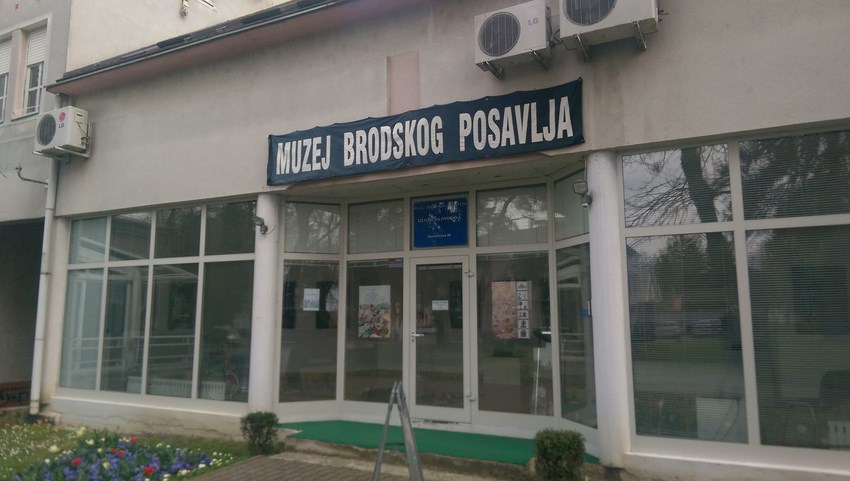 Not sure which words should be in upper case or lower case in Croatian? Write everything in upper case - problem solved! © Slavonski Brod Tourist Board
Not sure which words should be in upper case or lower case in Croatian? Write everything in upper case - problem solved! © Slavonski Brod Tourist Board
Sitting to one side and watching how others do something, judging them, then informing them they are doing it incorrectly is not the most pleasant way to occupy your time. However, for the purposes of this study, this not-uncommon activity in Croatia is exactly what was asked of the Slavonia students. However, as noted in today's coverage of this story in Index, there is a great saying in Croatian that serves as a response to any unwanted judgments coming from those on the sides - “clean up the trash in front of your own doorstep before you discuss that which lies in front of your neighbour's”. And, that's exactly what the Slavonia students did – and found out that the name of their own school was spelled wrong.
Croatian Dejan Nemcic The Best Geography Teacher In The World
ZAGREB October 23, 2020 – Croatian professor Dejan Nemcic is the best geography teacher in the world. He was awarded the status in the annual Global Teacher Awards for the vivid and imaginative way he engages students
Croatia has the best geography teacher in the world. Dejan Nemcic from Ivo Andrić Elementary School in Sopot, Zagreb was on Thursday 22 October named as the winner in his class by the annual Global Teacher Awards. He is one of the few winners this year from this part of Europe.
After he was named a recipient of the award, Dejan Nemcic was interviewed by Croatian media outlet 24sata. In the interview, he dedicated the award to his students.
Dejan Nemcic, who is originally from Garešnica in the south of Bjelovar-Bilogora County, was nominated because of the vivid and imaginative way he engages students in geography. Using online communications and multi-media he places students directly within the environments they're learning about.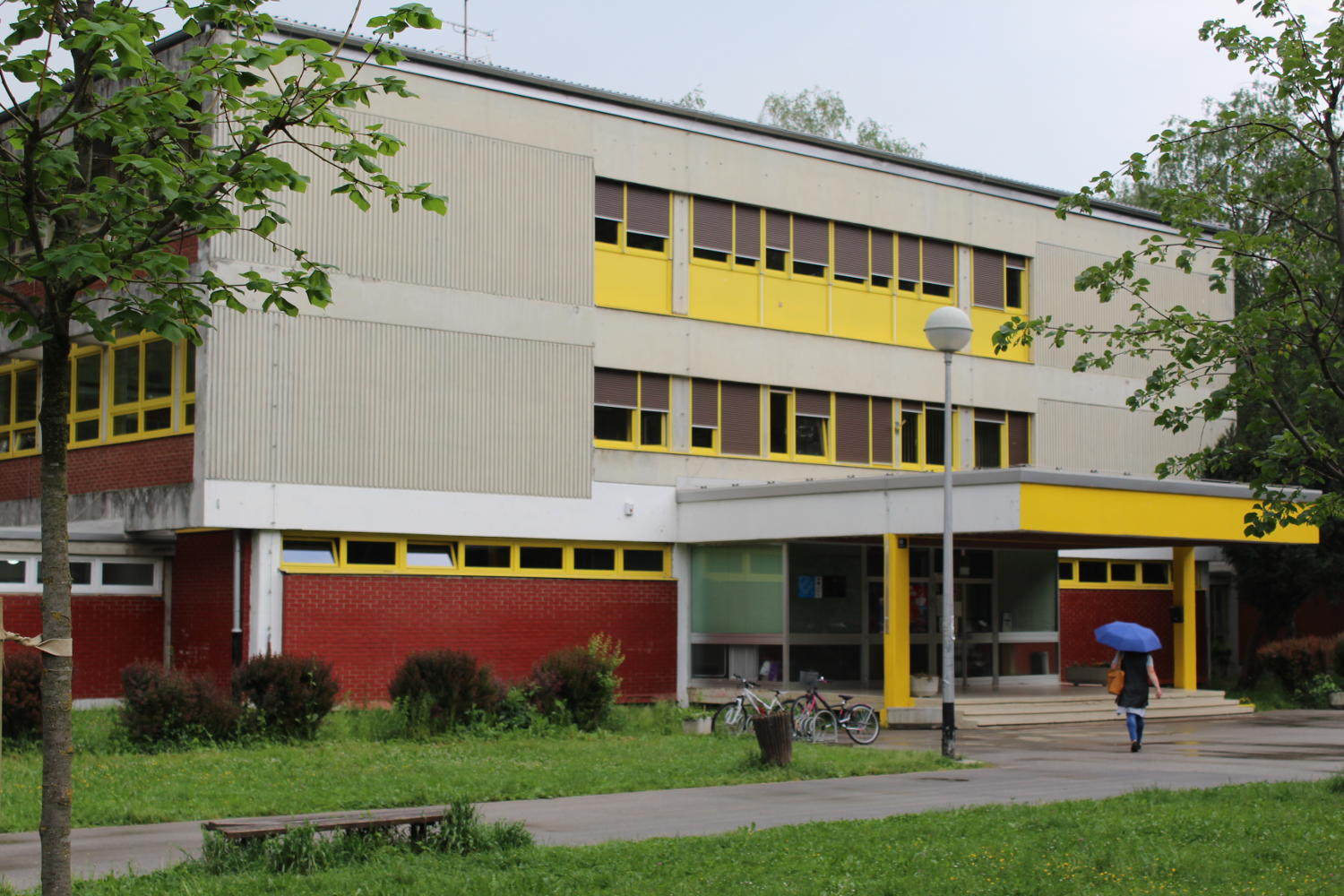 Ivo Andrić Elementary School in Sopot, Zagreb, where Dejan Nemcic teaches his inspired geography lessons © Ivo Andrić Elementary School
Ivo Andrić Elementary School in Sopot, Zagreb, where Dejan Nemcic teaches his inspired geography lessons © Ivo Andrić Elementary School
“I tell sixth-graders about the disappearance of the Amazon rainforest,” Dejan Nemcic detailed to 24sata as an example of his methods. “Then, my colleague Ana is waiting for us in a boat on the Amazon and we see everything as it really is. It’s the same with the favelas in Rio de Janeiro.” Using such collaborations and techniques he has allowed his students to travel the world from their classroom. He teaches everything that is included in the official curriculum but, with the blessing of the school administration, is free to teach it in his own inspiring way.
Around 150 members of the Croatian diaspora, located in the four corners of the earth, assist as part of the extended network of collaborators Dejan Nemcic has built over the last decade.
Educators from all over the world are included in the annual Global Teacher Awards. Teachers are nominated for inclusion by those who respect and admire their work. Dejan Nemcic was nominated by the EduBalkan platform.
For the latest travel info, bookmark our main travel info article, which is updated daily.
Read the Croatian Travel Update in your language - now available in 24 languages.
Following Lockdown, Changes Coming to Croatian Schools as of Autumn
Lockdown saw Croatian schools across the country bolt their doors and kids took to online ''distance'' learning at home, but as things gradually return to some sort of normality, or the ''new normal'' as it has become known, there are some changes in the works for Croatian schools on the horizon...
As Poslovni Dnevnik writes on the 1st of August, 2020, Minister Fuchs sent an amendment to the Ordinance on the manner and procedure of determining the conditions for the beginning of the school year for public discussion.
In all two-shift schools, which is the norm in the Croatian compulsary education system, the school hour could well be shortened from 45 to 40 minutes, as 24sata unofficially found out.
This will provide the necessary time between those two shifts for disinfection to be carried out and for the cleaning of the school premises and classrooms. Among other epidemiological measures that need to be in place in order to prevent the spread of the new coronavirus, these shifts in Croatian schools will serve to maintain distance between groups of students.
The competent ministry says that they are satisfied with the proposals from the City of Zagreb so far, but the principals of the schools that will accept the return of students still have many questions hanging above their heads. From what exactly the limitations of the number of students per one class will be, to how the issue of teachers who will naturally have their health endangered by the move will be solved. Thinking ahead, questions about their replacements when and if an epidemic breaks out are also necessary to ask.
As stated, last week on Thursday, Minister Fuchs sent an amendment for public discussion to the Ordinance on the manner and procedure of determining the conditions for the beginning of the school year. A part of the rulebook is being changed, according to which the expert commission belonging to the competent ministry should check whether there is a school that students from another school might go to, and provide that school with a work permit.
According to the proposed amendment, "a decision approving the continuation of work in [these] changed conditions may be issued by the Minister without prior appointment and the direct inspection of the expert commission".
For more on Croatian schools, follow our lifestyle section.
Young Croats Have The Best Digital Skills In Europe
July 16, 2020 - Young Croats have the best digital skills in Europe
Figures released by the European Union show that young Croats have the best digital skills in Europe. 97% of 16 to 24-year-olds in Croatia have basic or above basic digital skills.
The amazing result by young Croats is notably superior to their closest competitors Estonia, Lithuania and the Netherlands (all three 93%). By contrast, some neighbouring countries in south-east Europe observed the lowest shares; Romania (56%), Bulgaria (58%), Italy (65%), Hungary (68%).
Education in Europe was moved entirely online in recent months in response to the closure of schools. It seems Croatian students were the best-placed to deal with the switch to digital. 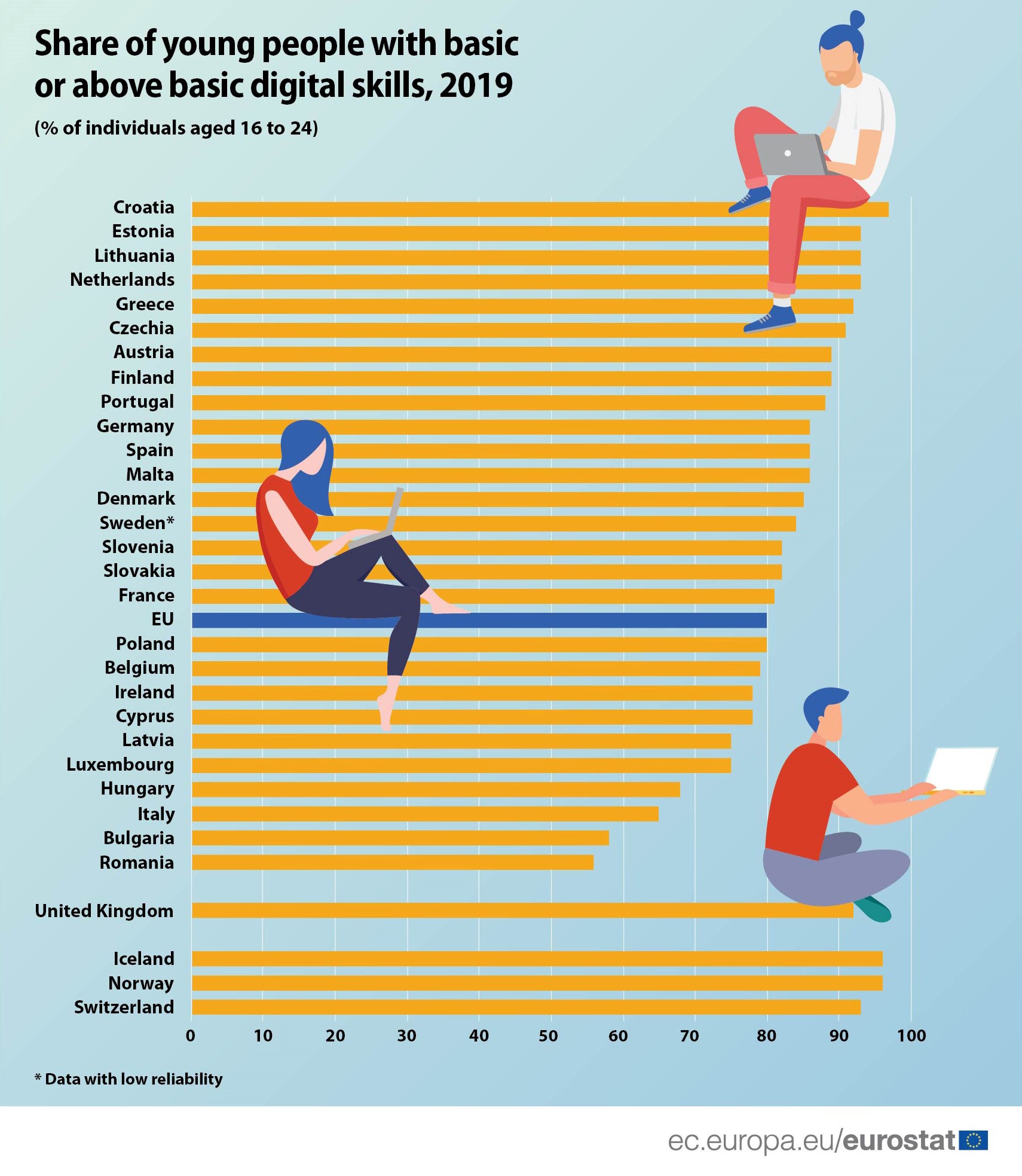
Croatia's 16 to 24-year-olds lead in digital skills across the whole of Europe
To obtain the figures, European authorities assessed young people in four specific areas of internet and software use; information, communication, problem solving and software skills.
Information skills include the ability to identify, locate, retrieve, store, organise and analyse digital information. Communication skills include using emails, social networks, online communication software such as video calls and uploading content online. Problem-solving skills included transferring files between devices and the installation and management of software and apps. Software skills are considered the ability to use and manipulate content such as spreadsheets, photo, video or audio files and the use of word processing software.
Not all of the proficiency displayed by young Croatians can be attributed solely to studious work at their home PCs or laptops; many of the skills young Croatians possess are accessible on and learned from mobile phones. However, education in Croatia does play a significant role in the country's amazing digital literacy.
In addition to the good standard of digital education available in Croatian schools, one contributing asset is the Croatian Makers programme run by Nenad Bakic. It is the largest non-governmental educational programme in the EU, has assisted in the digital education of over 200,000 children in Croatia and has educated over 3,000 teachers in Croatia for free so that they may pass on vital digital skills to future generations. The programme has been so successful it has extended beyond Croatia's borders and now also educates young people and their teachers in countries like Serbia, Bosnia and Herzegovina and Kosovo.
Kids from Croatia, Norway, Turkey and Romania Against Plastic Pollution
September the 10th, 2019 - Earlier this year, a small school from Baranja, the Popovac primary school, hosted 24 students and 8 teachers from Norway, Romania and Turkey as part of the international Erasmus+ project, ''Kids Against Plastic Pollution''.
Their days were filled with many activities and they did so much great work, but still had time to gather together and have a lot of fun. During the workshops, the students were very creative. By using recycled plastic
materials they made jewellery, fashion items, toys, pots for flowers, furniture for the school library and even bird houses. Cotton bags, made from recycled old sheets, were painted with eco-motifs and inspiring messages.
Liliana Solomon, a young educator from New York, taught the students about the importance of activism and shared her experiences from the USA. To bring their newfound knowledge into the real world, the Croatian students and their guests organised a silent march in Osijek where they warned the public about the huge problem of plastic bags and single use plastics. The media interest was high, and the student’s voices were heard far and wide, reaching long past this Drava river city.
The Baranja city of Beli Manastir hosted the “Plastic Horizont” exhibition, which featured the student’s photos. Their art highlighted the huge problem of plastic pollution not only in Croatia, but also in Norway’s fjords, in the Danube Delta in Romania, and and in the biggest Turkish summer resort in Antalya.
During their day-long trip to Zagreb, the students and their teachers admired the beauty of the Croatian capital city and had fun in the Museum of Illusions. Thanks to Petra Andrić from Greenpeace Croatia, the students learned about the problem of microplastic, which makes up 80 percent of all of the trash in the Mediterranean sea.
The students attended workshops where they used microscopes to analyse water samples from each country in the project, showing the problem of polluted water each place has. Afterwards, the pupils discussed the issue and suggested solutions for how each of them could solve this huge environmental problem in their own local communities. No stone was left unturned as all the students participated and lent their thoughts to the issue at hand.
An eighth grade Croatian student, Lana Herceg, said these are five days she'll never forget. She added: ''So many cultures and customs from different countries was great to see in a small village like Popovac. We really connected in such a short time and formed some great friendships. I only wish it could last much longer. I'm really happy that we all have opened our eyes to plastic pollution and I truly wish others would realise how huge this eco problem is,''
''This first meeting between pupils from Norway, Romania, Turkey and Croatia fills us with a lot of hope for the future. The pupils did excellent work and were engaged in the workshops and discussions that happened during the week in Popovac. The problems related to plastic are vast, but the engagement and enthusiasm of these pupils shows that a solution can be found,'' said one of the teachers from Norway, Maren Christine Fredriksen.
Lastly, the students planted a tree of friendship in the school's yard as a nice reminder that they all have decided to choose the planet instead of plastic.
Next week, six students from Baranja are travelling to Romania where they will meet again with other kids and keep working on this important project.
Follow Kids Against Plastic Pollution on Facebook here, and on Instagram here.
Follow our dedicated lifestyle page for more. If you're interested in how Croatia protects its environment, give Total Eco Croatia a follow.


